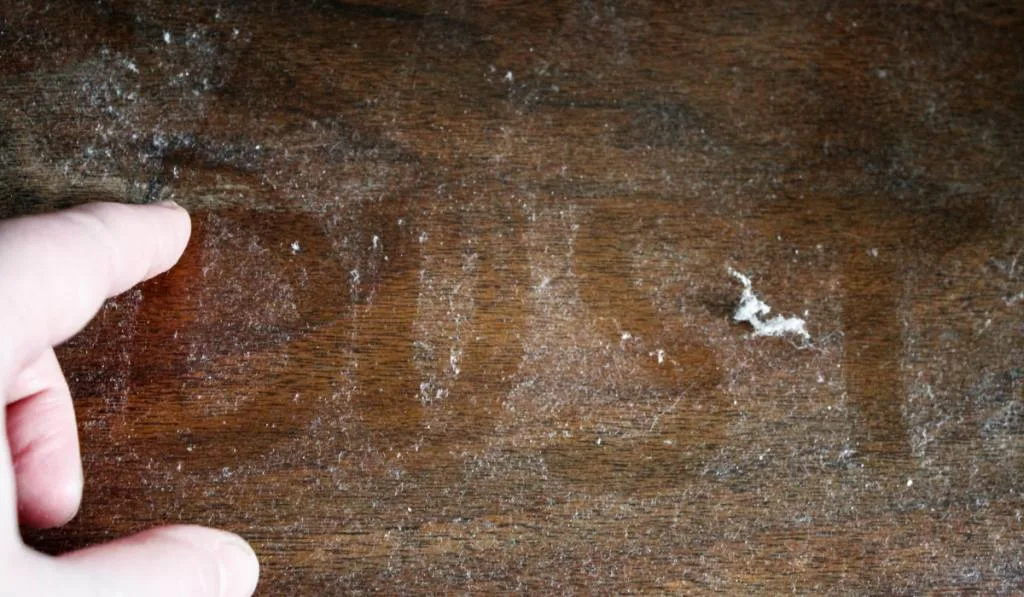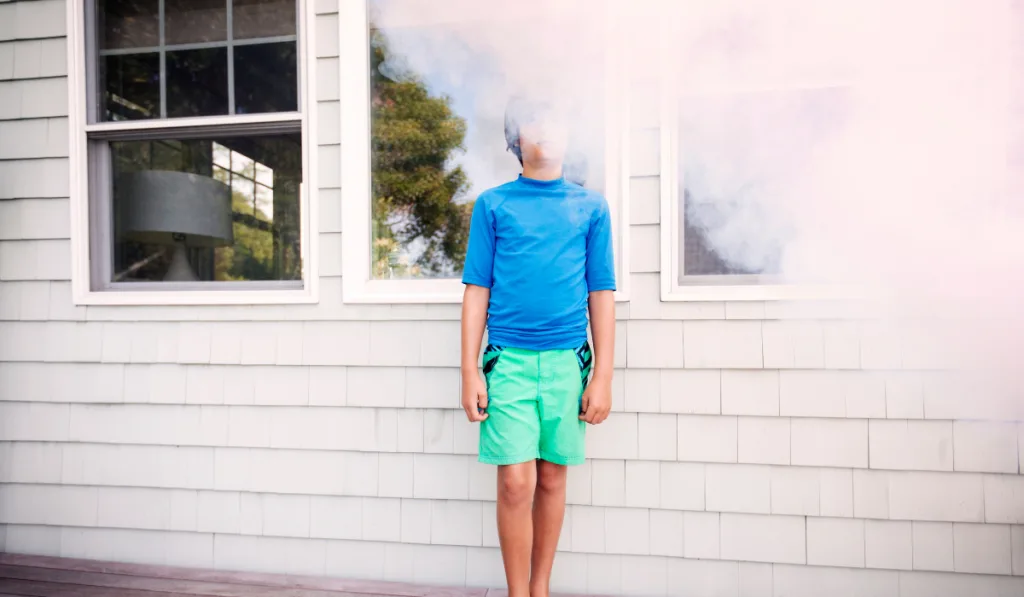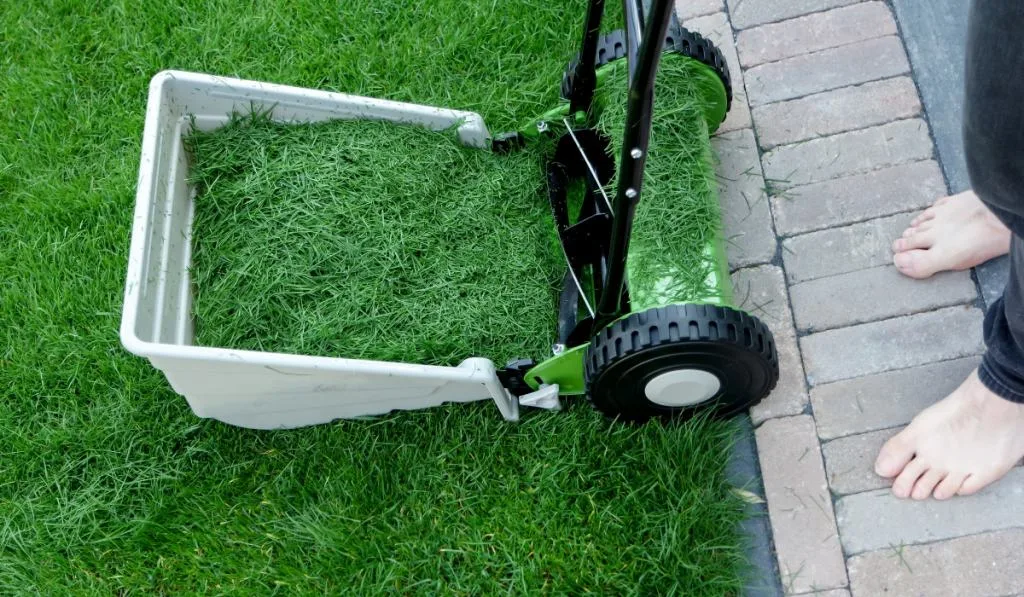Many people experience a jump in allergies when they move into a new house.
When you move in and start having itchy eyes, runny noses, or worse symptoms, it’s normal to worry about problems that your home inspection may have missed.
However, allergies regularly happen when people change environments. You still haven’t made the house your home, so your body is reacting to whatever the previous owners left behind. For example, they may have had a cat that you’re extremely allergic to.
Even if the prior owner has been out for months, their allergens may still be in the vents and ducts where you can’t see them. It will take time for your body to adjust, which can be frustrating and uncomfortable.
The good news is that you don’t have to sit there and do nothing about the allergens. There are things you can do to reduce allergen exposure to feel better after you move into a new house. Here are seven things that could trigger your allergies in a new house and what you can do.
1. Dust

Dust is one of your biggest irritants in a new house. All the activities involved in moving, like boxes, moving heavy items across carpets, sweeping, etc., churn up dust and send particles flying into your face.
When you breathe them in, your body tries to stop too much from getting into your body, so your nose will stop running, or you might experience constriction in your throat.
Moving into a new house can be miserable for people allergic to dust. In addition, it can take weeks for you to adjust to the new environment.
Try wearing a mask whenever you’re moving boxes, unpacking, or turning on HVAC systems that have been dormant for months. Take over-the-counter allergy remedies to try and reduce symptoms.
2. Pet Dander

Did the previous owner have pets? Sometimes it’s harder to tell than others. For example, if the house was vacant when you toured it, you wouldn’t have seen the pet running around or a cat litter box in the corner.
However, if there were pets in the house, there is sure to still be dander in vents and ducts. There will still be pet hairs in between floorboards and in carpets.
Removing pet dander takes time and consistent cleaning. You may also need to remove carpets to eliminate traces of old pets.
3. Pollen

Pay attention to what season it is when you move into the house. You could be dealing with heavy loads of pollen in the air that settle onto windows, doors, your car, and everything else around your house.
This is especially an issue for people who are sensitive to pollen but didn’t live in a high pollen area before they moved into a new house. If trees surround your house, it can exacerbate your allergic symptoms.
There’s not much to do about allergies other than keeping your windows and doors closed to keep the pollen out as much as possible. However, if you feel so inclined, you can remove trees, flowers, and other pollen-producing plants from around your home’s exterior.
Please park your car in the garage (if you have one) to keep it from getting coated in pollen during the season. You may also want to purchase air purifiers that will suck pollen particles out of the air in your home.
4. Smoke

One of the most significant issues with allergies in a new home is whether the previous owner smoked inside. It is typically quite challenging to remove all traces of a smoker in a house, especially if you’re planning on keeping any of the carpets and furniture.
Smoke can also penetrate walls and paint, so removing the carpet may not be the only thing you should do. Rather than simply paint over the old walls, you should wash them first and paint them once they are dry.
5. Yardwork

Yardwork is one of your new responsibilities when you purchase a new house. Some people love working out in the yard, and others loathe it. Either way, it must be done.
Fresh-cut grass is a common irritant for people with allergies. It can take some getting used to for people who are new to a house with a yard. You can hire someone to mow the lawn for you or wear a mask and gloves whenever you’re out cutting grass.
Change clothes as soon as possible once you are done to avoid taking pieces of grass around the house.
6. Climate Changes

Sometimes the weather is to blame for allergy difficulties in a new house. For example, some people experience increases in allergy symptoms when they go from humid climates to drier areas.
If you’re new to a place with dry, cold winters, it’s normal for your allergies to act up. The same goes for people who move to a more humid climate. The moisture in the area takes some getting used to, and your body may show signs of allergies as a protective reaction.
7. Air Quality Issues

Air pollution can also trigger allergies that are persistent and uncomfortable. Many people experience bad allergies when they move into new cities with more air pollution.
If you move from somewhere like Colorado to New York City, it’s going to be a shock to your system. In addition, the increase in air pollution exposure can lead to difficult allergic symptoms.
Your body will eventually adjust to its new environment, and you can combat air quality concerns with air filters in your home. There are many positives to living in the city, but air quality isn’t one of them. Air pollution is unfortunate in places with a lot of cars and congestion.

The Value of a Good Home Inspection
Moving into a new house and experiencing an explosion in allergies can be very frustrating. People with sensitive allergies often feel miserable and question whether they made the right move. People worry about unseen mold, termites, and other issues that could present long-term problems in the home.
However, before you move into a house, you should get a professional inspection that should paint a clear picture of what’s happening there. An inspection will usually find any mold outbreaks or past and present termite issues. Then, it’s up to the buyer to either move forward or walk away.
The point is you’ll know how bad any issues are before you move in, so don’t worry too much about something your inspector missed.
Instead, understand that it’s normal for allergies to kick up in a new house in the first weeks and months.
After that, your body needs time to adjust to your new environment.
If you start experiencing bad allergies in a new house, take some medicine you can buy at your local grocery store to suppress symptoms while your body adjusts. If that doesn’t do the trick, you can see a doctor for something more substantial.
Many people hire commercial cleaning services to deep-clean the house before they move in. Asking them to return again once everything is unpacked to help get rid of the dust from unpacking is also a good idea.
In addition, you may consider hiring a duct cleaning service to clear out any pet dander, smoke fumes, dust, and hair left over from the past owner.

